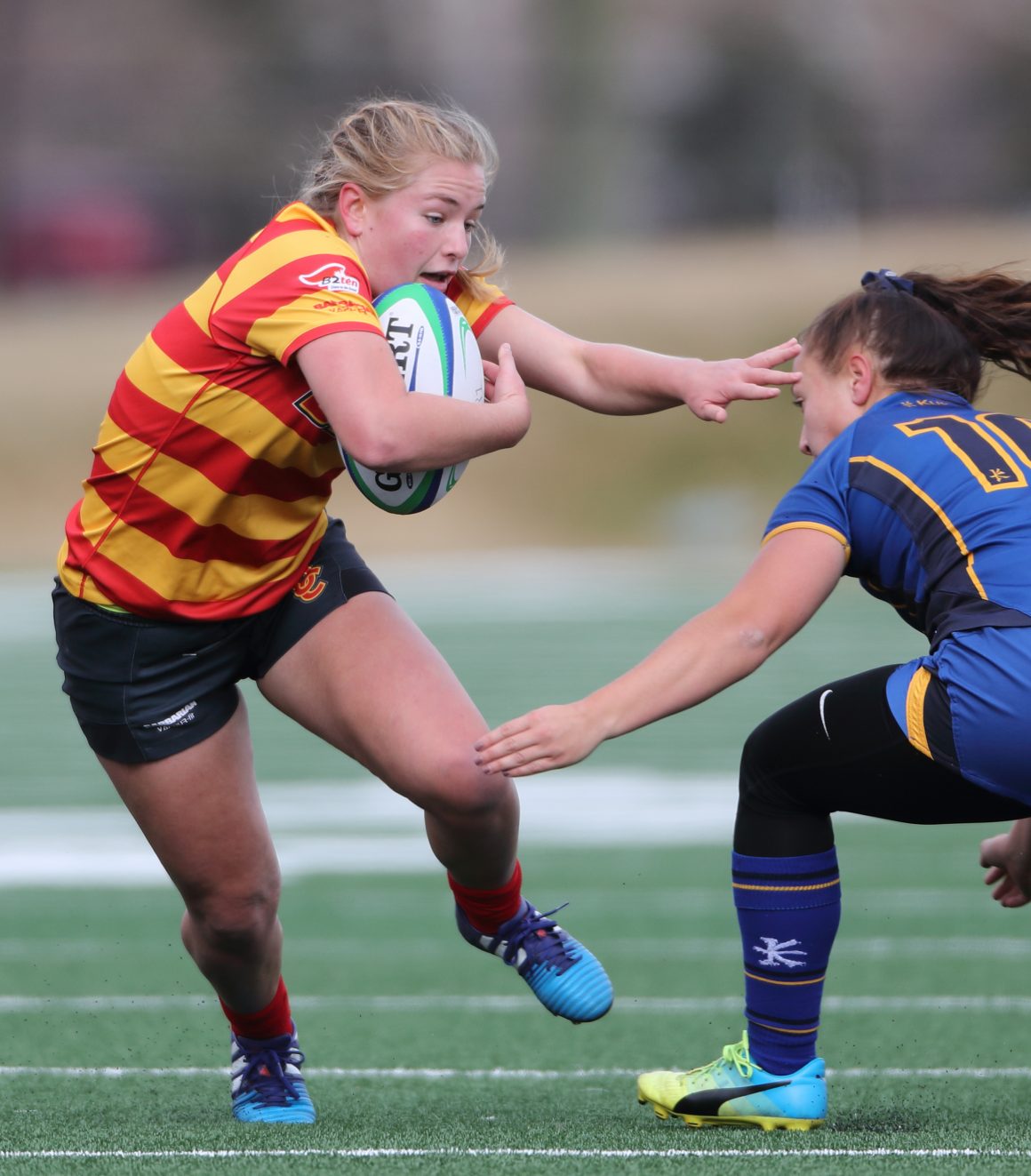
What separates varsity sports from club-level sports?
By Kristy Koehler, August 29 2018 —
The University of Calgary Dinos compete in 10 sports at the varsity level, including fan favourites like football and hockey. They compete in an additional nine at the club level. But what’s the difference? According to men’s rugby head coach Rayner Hart, not much. Rugby is unique in the Dinos’ athletics program in that the women’s team plays at the varsity level, while the men’s team does not have varsity standing. The distinction largely comes down to amount of promotion and funding, as well as each sport’s governing body.
Varsity sports in Canada are inter-university competitions, pitting schools against each other in a league run by a central governing body, U Sports. Club sports are also university-sanctioned but have a multitude of oversight organizations. As collegiate sports in Canada rose in popularity over the years, athletic programs recognized the need for a common voice and centralized co-ordination. Various athletic associations representing women’s athletics and regional sports had been operating across the country and, after integration and restructuring over the years, the Canadian Interuniversity Athletic Union expanded from its original format to become inclusive of universities from coast to coast rather than just Quebec and Ontario. An interim name change to Canadian Interuniversity Sport was a stepping stone on the way to the 2016 rebranding to the current U Sports.
Currently representing 56 universities, 12,000 athletes and 7,700 events per year, U Sports’ mission is to increase engagement with varsity athletics, citing a commitment to revitalize their place in the national sport conversation. This is where the promotional aspect comes into play since U Sports has the clout to promote and organize the sports falling within its jurisdiction.
Club sports such as men’s rugby, on the other hand, are largely on their own to organize schedules and promote their teams. Club-level sports also largely lack university funding. For U of C men’s rugby, Hart says he has 13 people on staff for his team and all of them are volunteers.
“There’s no funding for paying for coaches,” he says. “We are self-funded as far as the men’s program is concerned.”
Four conferences compete within U Sports, one of which is Canada West. The Dinos compete in this conference, along with the Mount Royal Cougars, the University of British Columbia Thunderbirds and the University of Alberta Golden Bears and Pandas, to name just a few others. The winner of each conference competes annually for the national title, governed and awarded by U Sports. Men’s rugby has a national championship that has been running for the last two years. One of the requirements of becoming a U Sports program is an existing national championship.
“[Including men’s rugby at the varsity level] has been on the table for a while,” Hart said. “It’s definitely something that Rugby Canada is pushing for.”
While U Sports doesn’t govern club-level sports, that isn’t to say there is no oversight at all. Various governing bodies and their committees and boards oversee the rules, conduct and tournaments of the nine club sports at U of C. Not being a varsity sport does have benefits, like more control over the year’s schedule and the flexibility to operate autonomously. Still, the ultimate goal for the team is to make an easy transition should men’s rugby become a varsity sport. The rugby team’s coaching staff is dedicated to expanding the sport. They’ve taken steps in the last several years to concentrate on high performance, focusing on strength and conditioning and using technology like video review sessions.
“We’re anticipating and hoping that it will become a varsity sport in the next couple of years or so,” Hart said. “When when that opportunity comes, we want to prove we are ready to step up.”
The team is already competing with rugby powerhouses like the University of Victoria and UBC. Hart says the focus this year is to close the gap and ensure that the program is extremely competitive. Recruitment efforts have been stepped up at local high schools. Club programs, however, have limited access to scholarships in comparison with the varsity programs.
Still, Hart says he cannot stress enough how supportive the U of C has been of the men’s rugby program despite its status as a club-level sport.
“They’ve been very helpful in getting us access to facilities that we need, whether it’s indoor gym space in the winter or logistical things like booking rooms in the school that we use for video review sessions,” he said.
The GoDinos website also features a section for men’s rugby, offering the team a space for much-needed promotion. Hart is in close contact with coaches from other universities and cites club sports at U of C as very lucky. He says the university has far more support than other schools in the area for its club programs.
Rowing, tennis, ringette, fastball, baseball, Nordic skiing, golf and synchronized swimming join men’s rugby in the ranks of official club sports. The U of C lists rosters, schedules and information for all of these on the GoDinos website.
